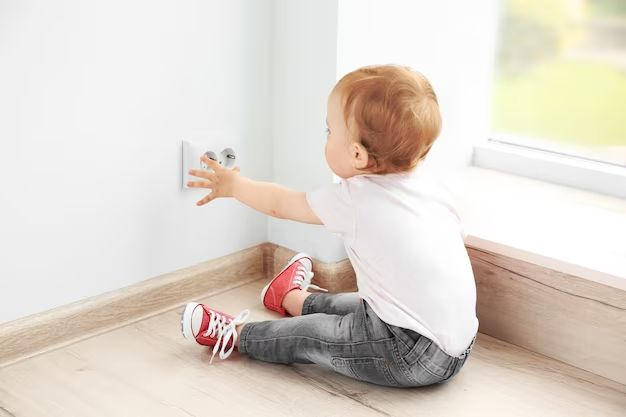An outlet in the floor is commonly referred to as a floor outlet, floor electrical outlet, floor receptacle, or floor plug. It provides access to electrical power through an outlet that is mounted flush with the floor. Floor outlets are convenient because they allow devices to be plugged in without long cords running across the floor. They can also provide electrical access in locations where wall outlets are impractical or unavailable. While most residential homes have wall outlets, floor outlets are frequently installed in commercial buildings, industrial facilities, and special use rooms where equipment needs to be plugged in away from walls.
Page Contents
Types of Floor Outlets
There are a few common types of floor outlets:
Pop-Up Floor Outlet
A pop-up floor outlet can be closed flush to the floor when not in use. When needed, a small flip door or plug is opened to access the recessed outlet below. This provides a safer, more aesthetic option that blends seamlessly into flooring when inactive. Pop-up outlets are convenient choices in spaces like stages, conference rooms, and reception halls where flexible power access is needed without visible outlets disrupting the décor.
Poke-Thru Floor Outlet
Poke-thru floor outlets are designed to literally “poke through” a hole in the floor above to provide power access from below. They are commonly used in office buildings where utilities are run under raised floors. The poke-thru fitting is installed through the floor opening and provides outlets right at floor level, keeping cords safely out of walkways. Poke-thru outlets allow easy reconfiguration of office spaces without rewiring above ceilings.
Flush Floor Outlet
Flush floor outlets are simple receptacles mounted flush with the floor surface. They provide direct plug-in capability without flip doors or other mechanisms. Flush outlets are the easiest to install, requiring only cutting a hole in the flooring material to fit the outlet. However, the outlet is always exposed even when not in use. These are most commonly seen in industrial, warehouse, or manufacturing settings.
Installing a Floor Outlet
Installing a floor outlet is more complex than a common wall outlet but can be completed safely by a knowledgeable DIYer. Here are the basic steps:
Step 1: Turn Off Power
Make sure to turn off power at the main breaker panel before beginning work. Verify it is off by testing with a circuit tester. Working with live power can result in severe electric shock.
Step 2: Cut Outlet Opening
Mark the floor with an opening centered between floor joists. Cut out the opening using a jigsaw or rotary tool. Opening size depends on the outlet mounting bracket. Note conduit or wiring locations to avoid cutting.
Step 3: Install Outlet Box
Secure an appropriate floor outlet box in the opening. The box should be anchored to the subfloor or joists. Knockout holes allow conduit or wiring access.
Step 4: Run Wiring
Run conduit and electrical wiring from the panel to the outlet box according to codes. Use only wiring suitable for the outlet amperage. Connect the wires securely to the outlet.
Step 5: Attach Cover
Install the outlet cover plate, locking it firmly in place over the box. For pop-up outlets, test raising and lowering the cover to ensure smooth operation.
Step 6: Restore Power and Test
With cover installed, carefully restore power at the panel. Test the outlet with a circuit tester before using.
Safety Tips for Floor Outlets
Floor outlets introduce certain risks, especially if not installed properly. Consider these safety tips:
– Use outlet covers suitable for expected foot traffic to prevent damage.
– Avoid overloading outlets with high-draw equipment like heaters that may overheat.
– Keep outlets free of dust, debris and moisture which can cause shorts.
– Ensure flush outlets don’t create trip hazards in walkways. Use beveled edges.
– Don’t exceed load limits – plugging too many devices into one outlet can cause fires.
– Install GFCI outlets for protection against shocks in wet areas.
– Use tamper-resistant outlets around children to prevent poking objects in.
– Don’t plug appliances like refrigerators into outlets if they could be stepped on.
– Keep popping outlet covers fully closed when not in use.
– Ensure all wiring is properly installed and enclosed to prevent damage.
Conclusion
In summary, the most common term for an outlet installed flush in the floor is a floor outlet. Different designs like pop-up and poke-thru outlets provide convenient power access from below. Installing a floor outlet requires running new wiring tailored to the outlet location and type. Like any electrical work, proper safety protocols and codes must be followed, especially to avoid tripping hazards and minimize electrical risks from the exposed outlet. With proper materials and installation, floor outlets can be a useful way to provide power in spaces where wall outlets are unavailable or impractical.
